Unlock Spring Success: Your Tactical Guide to Early Spring Fly Fishing

As winter gives way to spring, a new set of fly fishing challenges — and opportunities — emerges. Rising water temperatures trigger increased insect activity, and trout begin feeding more aggressively in preparation for the season ahead. But early spring isn’t always easy. Fluctuating weather, cold runoff, and inconsistent hatches can make conditions unpredictable and demand more deliberate strategy from anglers.
That’s why we’ve created this tactical guide to early spring fly fishing — to help you stay one step ahead of the conditions. Inside, you’ll find our top-performing nymphs, dry flies, and streamers for this transitional season, along with expert rigging setups, gear tips, and seasonal tactics to help you unlock success on the water.
Nymphs: The Underwater Workhorses
Early spring is prime time for nymphing, as trout continue to feed primarily subsurface in cold, variable water conditions. With hatches just beginning to emerge and flows often elevated from runoff, nymphs represent a consistent, calorie-rich food source that fish rely on day in and day out. Insects like midges, mayfly nymphs, stoneflies, caddis larvae, and scuds make up the bulk of a trout’s diet in the early season. Because trout are often sluggish in cold water, precise depth control and realistic presentations are key. Dead-drifting with strike indicators, tight-line Euro nymphing, or combining patterns in tandem rigs can increase your odds of success. This fly selection covers a range of profiles and weights to help you adapt to both slow, clear tailwaters and fast, freestone streams.
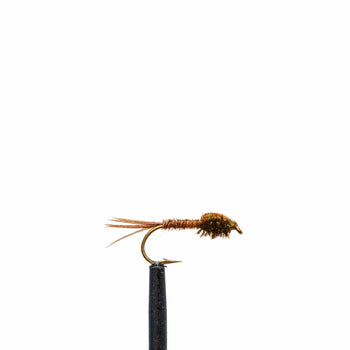
|

|

|

|
| Pheasant Tail Nymph | Zebra Midge | Hare’s Ear Nymph | Beadhead Flashback Pheasant Tail Scud |

|

|

|

|
| Tungsten Bead Perdigon Jig | Beadhead Soft Hackle Pheasant Tail | Tungsten Bead Duracell Jig | Kaufmann's Stonefly Nymph |
Top 8 Early Spring Nymphs:
- Pheasant Tail Nymph (Sizes 12–20) – A classic, must-have nymph that imitates a wide range of mayfly species. Its slim, natural profile makes it effective in clear water conditions. Fish it alone under an indicator or as the trailing fly in a two-nymph rig. Particularly productive during Baetis hatches and in slower currents.
- Zebra Midge (Sizes 18–24) – The most important winter food source, midges hatch year-round and make up the bulk of a trout’s diet in cold water. Fish it in red, black, or olive, dead-drifted under an indicator or as a dropper beneath a larger nymph. Perfect for tailwaters and technical spring creeks.
- Hare’s Ear Nymph (Sizes 12–16) – One of the most versatile all-purpose patterns, the Hare’s Ear mimics everything from mayfly and caddis larvae to small stoneflies. The buggy body and natural fibers give it built-in movement. Fish it near the bottom in riffles, pockets, and seams.
- Beadhead Flashback Pheasant Tail Scud - Green (Sizes 12–18) – This scud imitation is a staple in spring, especially in stillwaters and tailwaters where aquatic vegetation is present. The flashback adds just enough trigger to catch a trout’s eye. Dead-drift near the bottom or use as a dropper off a leech or bugger.
- Tungsten Bead Perdigon Jig - Olive (Sizes 12–18) – Designed for fast water, this Euro-style jig sinks quickly and stays in the strike zone longer. The slim body and coated finish cut through current efficiently. Fish it tight-line nymphing or on a euro rig in pocket water and runs.
- Beadhead Soft Hackle Pheasant Tail (Sizes 14–18) – Combines the effectiveness of the Pheasant Tail with the motion of a soft hackle collar. The pulsating hackle simulates emerging insects, making it deadly during mayfly activity. Swing it on the lift at the end of your drift or fish it on the swing.
- Tungsten Bead Duracell Jig - Purple (Sizes 14–18) – A high-performance attractor nymph with a buggy dubbed body and flashy ribbing. The purple coloration and tungsten bead make it especially good in stained or glacial runoff conditions. Fish it deep under an indicator or tight-line style.
- Kaufmann's Stonefly Nymph (Sizes 8–12) – A beefy pattern that imitates golden stones and salmonfly nymphs, especially productive in freestone streams with rocky bottoms. Great as the anchor fly in a two-nymph setup. Drift it slowly along the bottom where stoneflies naturally crawl.
📌 Pro Tip: Use a double-nymph rig with a heavier lead fly (like a Stonefly or Perdigon) and a lighter trailer fly (such as a Zebra Midge) to cover different depths.
Dry Flies: Early Spring Hatches
While subsurface fishing dominates early spring, there are still great opportunities to fish dries — especially on sunny afternoons or overcast days with active hatches. Midges and Blue-Winged Olives (BWOs) are typically the first insects to bring trout to the surface, followed by sporadic early season caddis, March Browns, and Quill Gordons as spring progresses. Fishing dries during these moments can be incredibly rewarding, especially when trout are rising consistently in soft seams or tailouts. Success with dry flies this time of year requires close observation, matching hatch timing, and careful presentation — often with long leaders and light tippet. This early spring dry fly selection includes proven midge patterns, classic early-season mayflies, and attractor dries to cover a range of water types and hatch conditions.
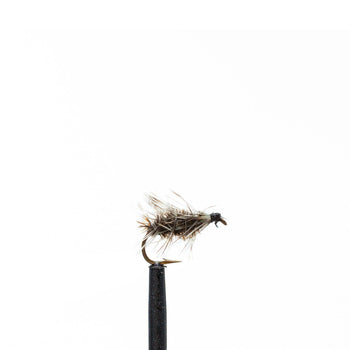
|

|
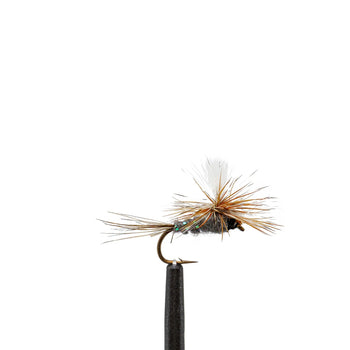
|
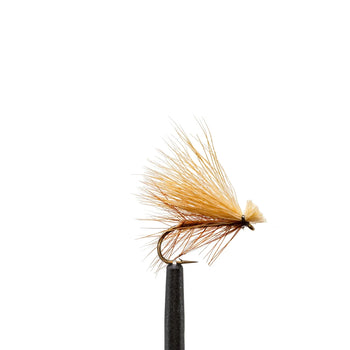
|
|
Griffith’s Gnat |
Blue-Winged Olive (BWO) |
Para Flash Adams |
Elk Hair Caddis |

|

|
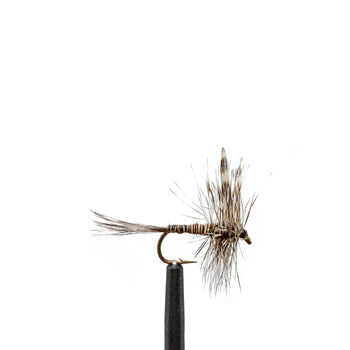
|
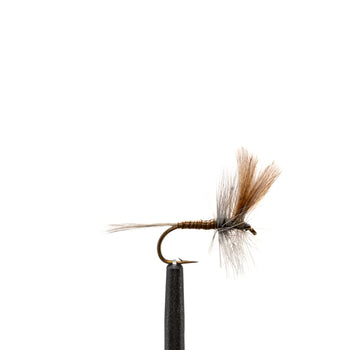
|
| Steelhead Royal Wulff |
March Brown |
Mosquito |
Quill Gordon |
Top 8 Early Spring Dry Flies:
- Griffith’s Gnat (Sizes 18–22) – Designed to imitate clusters of adult midges, this fly excels when fish are sipping tiny insects in calm water. Its peacock herl body and hackle provide a realistic footprint. Fish it during midge swarms on overcast days with a delicate presentation and fine tippet (6X+).
- Blue-Winged Olive (BWO) (Sizes 18–22) – One of the most reliable early spring hatches, especially on cloudy or drizzly days. Match the hatch with this low-riding dry and target soft seams and back eddies where BWOs often emerge. Add floatant to the thorax only for a more realistic look.
- Para Flash Adams (Sizes 14–18) – A high-visibility parachute version of a classic mayfly imitation. The white post helps track it in rougher water or low light. Use it as an all-purpose dry during uncertain hatches or as the top fly in a dry-dropper rig.
- Elk Hair Caddis (Sizes 14–18) – An essential pattern for mid-to-late spring, this buoyant dry fly imitates caddis adults skating along the surface. Excellent for fishing pocket water and riffles. Try twitching it slightly during the drift to trigger strikes.
- Steelhead Royal Wulff (Sizes 12–16) – A bushy, high-floating attractor pattern that works well in turbulent water. Though not a precise imitation, it draws aggressive takes during mixed hatches or when nothing else is rising. A great dry for prospecting new water.
- March Brown (Sizes 12–14) – A key hatch in many streams during late March and early April. These larger mayflies bring big trout to the surface, especially in the afternoons. Fish it near riffle-drop transitions or over gravel-bottomed pools.
- Mosquito (Sizes 16–20) – Despite the name, this dry fly doubles as a midge or small mayfly imitation. Particularly effective on calm spring mornings and in stillwater settings. Use it for picky surface-feeders sipping in glassy water.
- Quill Gordon (Sizes 12–14) – One of the earliest big mayfly hatches of spring, especially in the East and Midwest. This fly rides high and stays visible even in broken water. Target tailouts and slow riffles when fish are rising in earnest.
📌 Pro Tip: Use a dry-dropper rig by pairing a high-floating dry fly (like a March Brown or Elk Hair Caddis) with a small nymph (Zebra Midge or Pheasant Tail) 12–24 inches below it.
Streamers: Targeting Aggressive Fish
As water temperatures rise and daylight increases, trout shift toward a more aggressive feeding mode. Larger prey like sculpins, baitfish, leeches, and even juvenile trout become key food sources — especially for larger, territorial fish. Streamer fishing in early spring can be explosive, offering a chance at the biggest trout of the season. Anglers should be ready to adjust retrieve speed, depth, and fly profile depending on water clarity, flow, and fish activity. Sink-tip lines, weighted streamers, and articulated patterns help get your fly in the strike zone fast. Whether you’re swinging through slow runs, stripping through deep pools, or probing undercut banks, these eight spring streamers are designed to trigger instinctive strikes when trout are on the hunt.
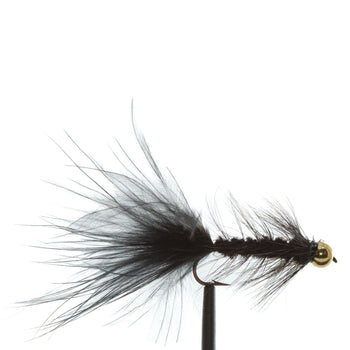
|
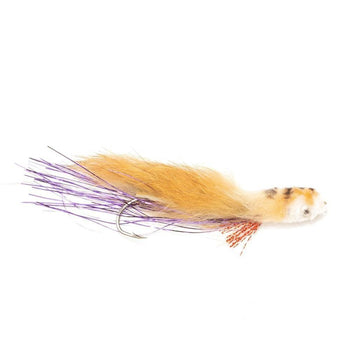
|
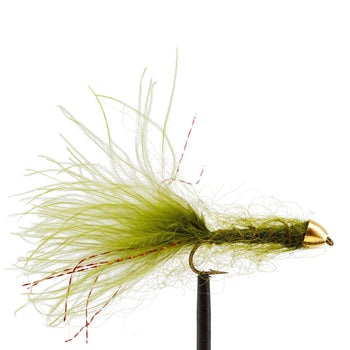
|
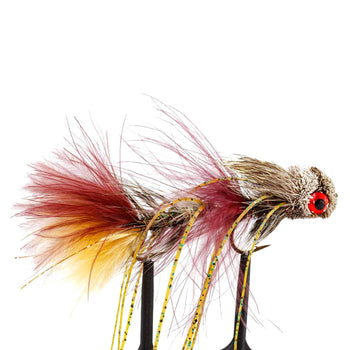
|
|
Wooly Bugger |
Sculpin Patterns |
Leech Patterns | Beadhead Flashback Pheasant Tail Scud |

|

|
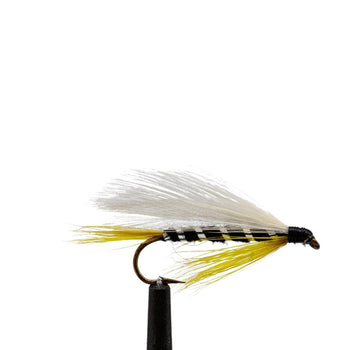
|
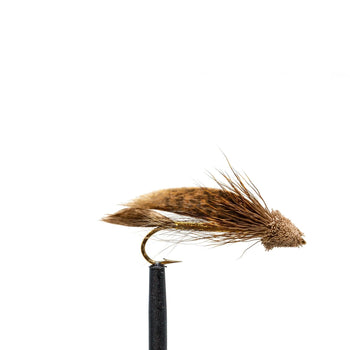
|
|
Mickey Finn |
Freight Train |
Tungsten Bead Duracell Jig | Muddler Minnow |
Top 8 Early Spring Streamers:
- Wooly Bugger (Sizes 6–10) – The ultimate all-around streamer. Imitates leeches, baitfish, and even drowned insects. Fish it dead-drifted along the bottom or with a slow strip-pause retrieve. Black, olive, and brown are go-to early season colors.
- Sculpin Patterns (Sizes 6–10) –These low-riding streamers mimic bottom-hugging baitfish and are deadly for big predatory trout. Use with a sink-tip line and bounce them near structure or along undercut banks. Great in freestone rivers and tailwaters.
- Leech Patterns (Sizes 6–10) – As temperatures warm, leeches become active and trout key in on their undulating motion. Use patterns with rabbit or marabou for natural movement, and retrieve with slow, steady strips. Ideal for stillwaters and slower tailouts.
- Sex Dungeons (Sizes 4–6) – An articulated streamer designed to provoke big strikes with its dual hooks and lifelike movement. Best fished with a sink-tip line and aggressive retrieve. Ideal for targeting territorial trout after a temp spike.
- Mickey Finn (Sizes 6–10) – A flashy, bright streamer that’s especially effective in stained or off-color water. The red and yellow combo imitates smaller baitfish or fry. Strip it quickly through seams or swing it through slower pools.
- Freight Train (Sizes 4–8) – A traditional west coast-style streamer that works well when swung on a down-and-across presentation. Its bold profile and movement are great for slow, deep runs. Best with intermediate or sink-tip lines.
- Black Ghost (Sizes 6–10) – A timeless feather-wing streamer that’s still as effective today as it was decades ago. Fish it with long swings in soft pools or strip it through deep channels. Great for clear water and spooky fish.
- Muddler Minnow (Sizes 6–10) – With its buoyant deer hair head, the Muddler can be fished in a variety of ways: dead-drifted, twitched, or stripped. Imitates sculpins, fry, or even terrestrials depending on retrieve and presentation.
📌 Pro Tip: Vary your retrieve speed and depth to determine what triggers strikes. A slow strip-pause method works best in colder water.
Recommended Early Spring Fly Fishing Rigs

Indicator Nymph Rig (Best for Deep Pools & Runs)
- 9–10 ft leader (4X–5X)
- 2 nymphs (e.g., Stonefly + Zebra Midge)
- Strike indicator placed 1.5x the water depth above flies
- Add split shot for extra weight

Dry-Dropper Rig (Great for Transitional Water)
- 9 ft leader (5X–6X)
- Dry fly (e.g., Elk Hair Caddis or March Brown)
- Nymph dropper 12–24 inches below dry fly

Streamer Rig (Best for Aggressive Fish)
- 7–8 ft leader (1X–3X)
- Weighted streamer (e.g., Sculpin or Woolly Bugger)
- Use a sink-tip line if needed for depth control
Additional Early Spring Tips
- Fish the Warmest Part of the Day – Trout become more active as water temperatures rise in the afternoon.
- Target Slow Runs and Deep Pools – Early spring trout often hold in softer water rather than fast riffles.
- Use Slightly Larger Flies in Stained Water – Spring runoff can introduce sediment, reducing visibility.
Taking It to the River: Your Early Spring Fly Fishing Game Plan
Early spring fly fishing presents a unique blend of challenges and rewards. The weather can be unpredictable, but for those who dial in their fly selection, presentation, and techniques, the fishing can be spectacular.
- Start with nymphs in deep pools and runs where trout are feeding.
- Switch to dry flies when fish start rising to midges or BWOs.
- Experiment with streamers when targeting aggressive trout, especially after a temperature bump.
Spring is here—get out on the water, embrace the transition, and enjoy some of the best fishing of the year!







